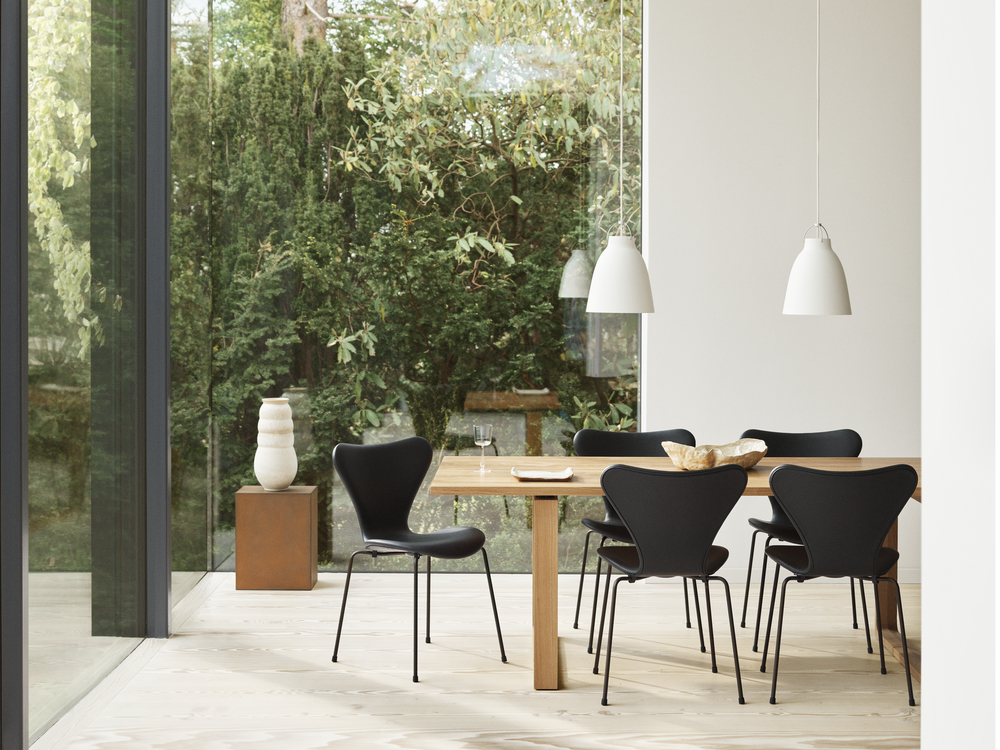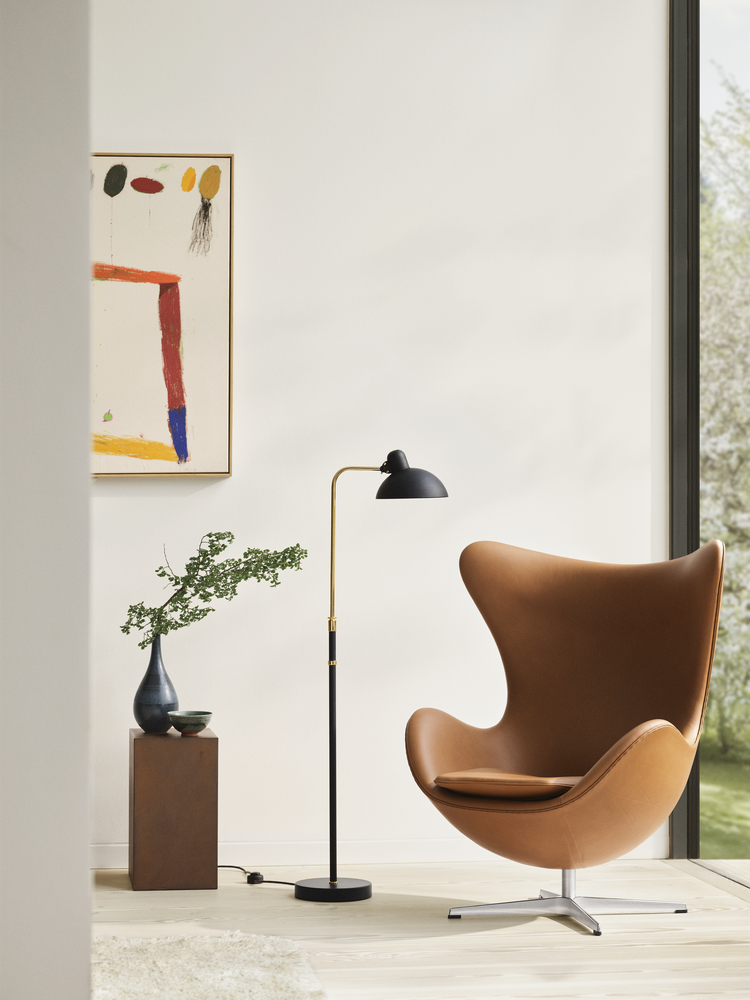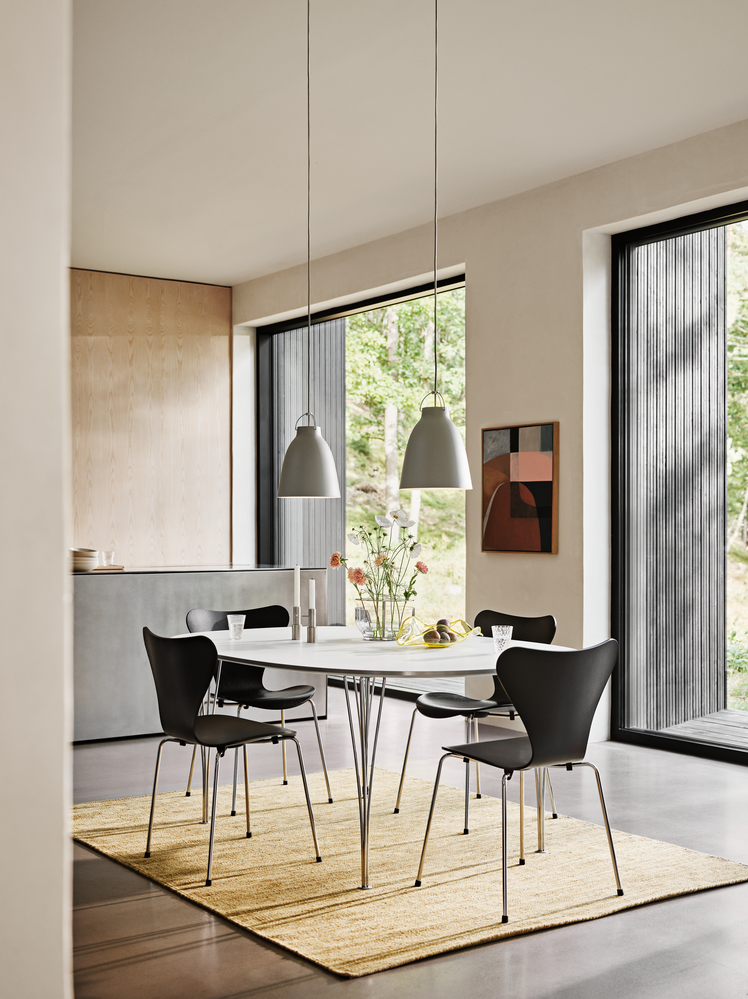The 150-year-old Danish design house Australians love
As it celebrates its 150th anniversary today, we look back on Fritz Hansen and this Danish design house’s ongoing love affair with Australia
Fritz Hansen may not be a household name beyond design circles but chances are you’re already familiar with the work of this Danish furniture company. From the first Danish steamed ‘bentwood’ chair created by the founder’s son in Copenhagen in 1915 to the work of 21st century Spanish designer Jaime Hayon, Fritz Hansen has built its reputation on innovation and collaboration.
Today marks the 150th anniversary of this iconic furniture house.
Cabinet maker Fritz Hansen gained his trade licence in October 1872 and by 1885 he opened his own production company creating high quality furniture. For the next 50 years, the business thrived, as Hansen, working alongside his son Christian, gained significant contracts from the likes of the Danish Parliament and the Supreme Court at Christiansburg Palace.
As he continued to innovate, working with steel in the 1930s and then stockpiling walnut in the post war years when timber was scarce, Hansen also sought out collaboration, working with architect and designer Arne Jacobsen and fellow master craftsman, Hans J Wegner, among others.
Between them, this trio are responsible for some of the most recognisable furniture pieces, not just in Denmark, but around the world.
This included Wegner’s China Chair, which was released in 1944, followed by fellow designer Børge Mogensen’s spoke back sofa a year later. They were instant hits and, like many mid century pieces from Fritz Hansen, both designs are still in production today.
Other pieces followed, including Arne Jacobsen’s Ant Chair and the hugely popular Series 7 chairs, which have become synonymous with stylish corporate environments.
While they were consistently in demand internationally, the Fritz Hansen catalogue really took off in Australia with the resurgence of mid century design at the turn of the 21st century.
Director of Australian designer furniture company Cult, Richard Munao, said when his business began to represent Fritz Hansen more than 20 years ago, Australians were familiar with the classics, such as the Egg chair and Swan chair, but it was clear that there was much more to draw on.
“We changed the whole language,” Mr Munao said. “Everyone knows the classics but we wanted people to see Fritz Hansen in a way they hadn’t seen before.”
Now more popular than ever, the classics have continued to be strong sellers, especially among the hospitality and commercial office sectors. Mr Munao said despite the distances there’s a certain synchronicity between nations.
“There are a lot of shared values between Denmark and Australia,” he said. “They also love the outdoors and they are really relaxed with a similar sense of humour.
“And they like to surround themselves with beautiful things.”
As the Fritz Hansen range gained ground here, other Danish brands have followed, including HAY, PP Møbler and Carl Hansen & Son.
Even as the company marks its 150th year, Mr Munao says Fritz Hansen continues to strive for beautiful, functional pieces that will live on.
“They don’t want to be seen just as a heritage brand,” he said. “In the past five to 10 years they’ve picked up Jaime Hayon, among others.
“Everything has a beautiful story and that makes our job so much easier. People keep coming back.”
To mark the anniversary, Fritz Hansen has released a range of special edition pieces in limited edition upholstery and finishes, including the Egg chair, Swan chair and the Series 7.
“Our biggest sales last year were Series 7 chairs,” Mr Munao said. “It was a government project for 1800 chairs.”
Some things never go out of style.
This stylish family home combines a classic palette and finishes with a flexible floorplan
Just 55 minutes from Sydney, make this your creative getaway located in the majestic Hawkesbury region.
As Paris makes its final preparations for the Olympic games, its residents are busy with their own—packing their suitcases, confirming their reservations, and getting out of town.
Worried about the hordes of crowds and overall chaos the Olympics could bring, Parisians are fleeing the city in droves and inundating resort cities around the country. Hotels and holiday rentals in some of France’s most popular vacation destinations—from the French Riviera in the south to the beaches of Normandy in the north—say they are expecting massive crowds this year in advance of the Olympics. The games will run from July 26-Aug. 1.
“It’s already a major holiday season for us, and beyond that, we have the Olympics,” says Stéphane Personeni, general manager of the Lily of the Valley hotel in Saint Tropez. “People began booking early this year.”
Personeni’s hotel typically has no issues filling its rooms each summer—by May of each year, the luxury hotel typically finds itself completely booked out for the months of July and August. But this year, the 53-room hotel began filling up for summer reservations in February.
“We told our regular guests that everything—hotels, apartments, villas—are going to be hard to find this summer,” Personeni says. His neighbours around Saint Tropez say they’re similarly booked up.
As of March, the online marketplace Gens de Confiance (“Trusted People”), saw a 50% increase in reservations from Parisians seeking vacation rentals outside the capital during the Olympics.
Already, August is a popular vacation time for the French. With a minimum of five weeks of vacation mandated by law, many decide to take the entire month off, renting out villas in beachside destinations for longer periods.
But beyond the typical August travel, the Olympics are having a real impact, says Bertille Marchal, a spokesperson for Gens de Confiance.
“We’ve seen nearly three times more reservations for the dates of the Olympics than the following two weeks,” Marchal says. “The increase is definitely linked to the Olympic Games.”

Getty Images
According to the site, the most sought-out vacation destinations are Morbihan and Loire-Atlantique, a seaside region in the northwest; le Var, a coastal area within the southeast of France along the Côte d’Azur; and the island of Corsica in the Mediterranean.
Meanwhile, the Olympics haven’t necessarily been a boon to foreign tourism in the country. Many tourists who might have otherwise come to France are avoiding it this year in favour of other European capitals. In Paris, demand for stays at high-end hotels has collapsed, with bookings down 50% in July compared to last year, according to UMIH Prestige, which represents hotels charging at least €800 ($865) a night for rooms.
Earlier this year, high-end restaurants and concierges said the Olympics might even be an opportunity to score a hard-get-seat at the city’s fine dining.
In the Occitanie region in southwest France, the overall number of reservations this summer hasn’t changed much from last year, says Vincent Gare, president of the regional tourism committee there.
“But looking further at the numbers, we do see an increase in the clientele coming from the Paris region,” Gare told Le Figaro, noting that the increase in reservations has fallen directly on the dates of the Olympic games.
Michel Barré, a retiree living in Paris’s Le Marais neighbourhood, is one of those opting for the beach rather than the opening ceremony. In January, he booked a stay in Normandy for two weeks.
“Even though it’s a major European capital, Paris is still a small city—it’s a massive effort to host all of these events,” Barré says. “The Olympics are going to be a mess.”
More than anything, he just wants some calm after an event-filled summer in Paris, which just before the Olympics experienced the drama of a snap election called by Macron.
“It’s been a hectic summer here,” he says.

AFP via Getty Images
Parisians—Barré included—feel that the city, by over-catering to its tourists, is driving out many residents.
Parts of the Seine—usually one of the most popular summertime hangout spots —have been closed off for weeks as the city installs bleachers and Olympics signage. In certain neighbourhoods, residents will need to scan a QR code with police to access their own apartments. And from the Olympics to Sept. 8, Paris is nearly doubling the price of transit tickets from €2.15 to €4 per ride.
The city’s clear willingness to capitalise on its tourists has motivated some residents to do the same. In March, the number of active Airbnb listings in Paris reached an all-time high as hosts rushed to list their apartments. Listings grew 40% from the same time last year, according to the company.
With their regular clients taking off, Parisian restaurants and merchants are complaining that business is down.
“Are there any Parisians left in Paris?” Alaine Fontaine, president of the restaurant industry association, told the radio station Franceinfo on Sunday. “For the last three weeks, there haven’t been any here.”
Still, for all the talk of those leaving, there are plenty who have decided to stick around.
Jay Swanson, an American expat and YouTuber, can’t imagine leaving during the Olympics—he secured his tickets to see ping pong and volleyball last year. He’s also less concerned about the crowds and road closures than others, having just put together a series of videos explaining how to navigate Paris during the games.
“It’s been 100 years since the Games came to Paris; when else will we get a chance to host the world like this?” Swanson says. “So many Parisians are leaving and tourism is down, so not only will it be quiet but the only people left will be here for a party.”
This stylish family home combines a classic palette and finishes with a flexible floorplan
Just 55 minutes from Sydney, make this your creative getaway located in the majestic Hawkesbury region.





















